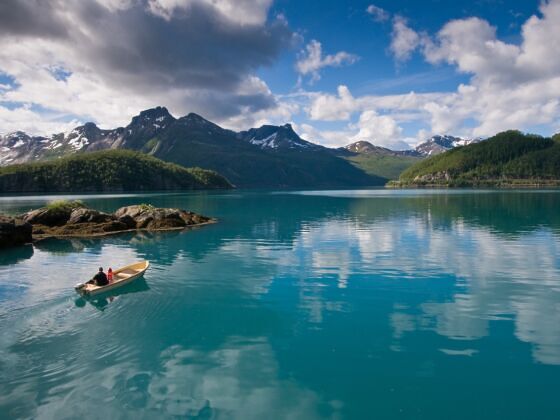When to Go
There’s probably no better time to visit Bodø than the height of summer, to be honest: it lies just inside the Arctic Circle, and during winter the sun remains invisible for over a month.
But the season of the midnight sun reveals the city at its best. When its main streets are bathed in sunshine and its café terraces full of families enjoying fresh prawn sandwiches, it’s easier to overlook the surrounding shopping mall facades.
